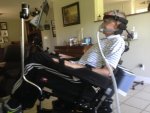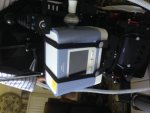This thread has been helpful to me, especially seeing it from the perspective of Bruce and Arizona gal, who use Trilogy 24/7 and still get out and about with their wheelchairs.
I wanted to address Ernie’s (Chincoteaguer) concern: “She has no noticeable problem breathing without it which makes it hard to convince her to use it.”
I decided early on against invasive ventilation. When it came to deciding whether I would accept BiPAP/ Trilogy, I chose to accept it when needed because it is noninvasive and can improve my quality of life as well as conserve energy related to work of breathing.
I also read somewhere that some PALS without it would panic as their respiratory muscles failed and would feel as if they were suffocating, sometimes even fearing to go to sleep. Then I read that this sense of panic could be mitigated by noninvasive ventilation. That had me convinced.
I recently started BiPAP at least 4 hours a night, mainly to see if it would help headaches, but also to reduce work of breathing. I don’t really feel I need it at this point. I have noticed, that when the mask is sealing properly and everything is set up right, that there is a calming effect. There is also something reassuring about knowing that the thing will kick in a breath if I stop breathing for a bit. It does take a while to get used to the mask. Overall, I’m seeing the concept as friendly.


